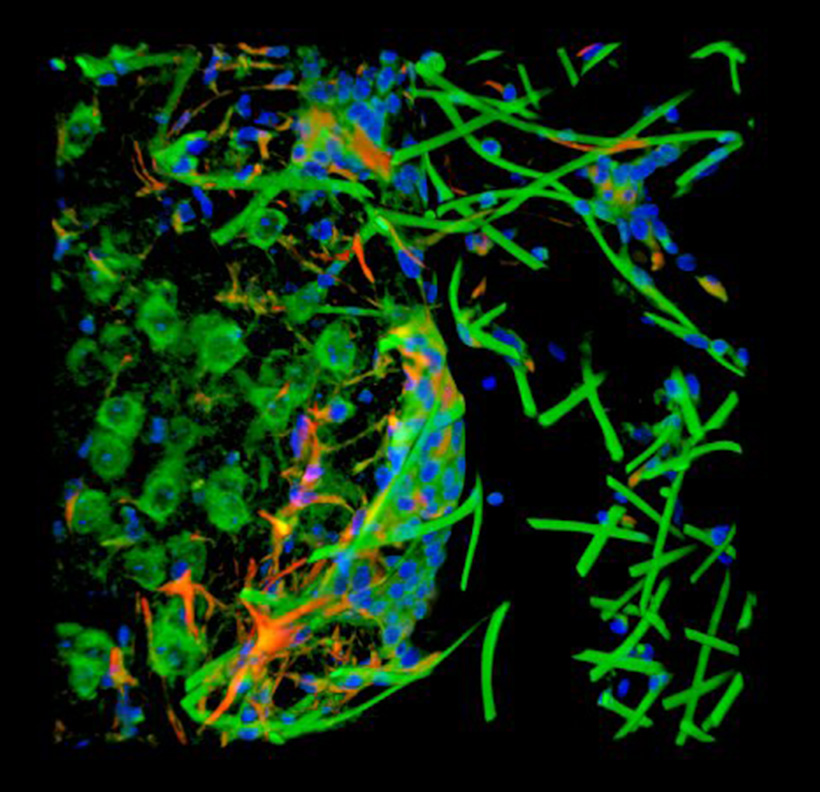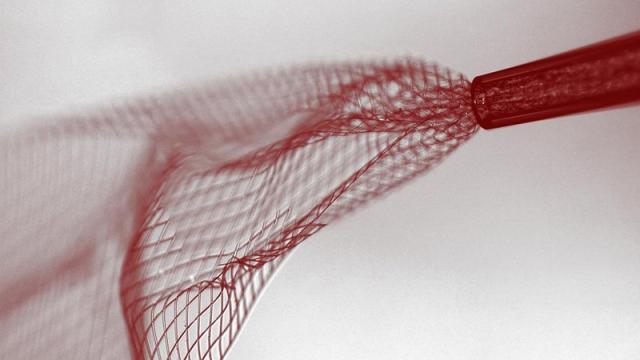In the Culture novels by Iain M. Banks, futuristic post-humans install devices on their brains called a “neural lace”. A mesh that grows with your brain, it’s essentially a wireless brain-computer interface. But it’s also a way to program your neurons to release certain chemicals with a thought. And now, there’s a neural lace prototype in real life.
A group of chemists and engineers who work with nanotechnology published a paper this month in Nature Nanotechnology about an ultra-fine mesh that can merge into the brain to create what appears to be a seamless interface between machine and biological circuitry. Called “mesh electronics”, the device is so thin and supple that it can be injected with a needle — they have already tested it on mice, who survived the implantation and are thriving. The researchers describe their device as “syringe-injectable electronics”, and say it has a number of uses, including monitoring brain activity, delivering treatment for degenerative disorders like Parkinson’s, and even enhancing brain capabilities.
Writing about the paper in Smithsonian magazine, Devin Powell says a number of groups are investing in this research, including the military:
[Study researcher Charles Lieber’s] backers include Fidelity Biosciences, a venture capital firm interested in new ways to treat neurodegenerative disorders such as Parkinson’s disease. The military has also taken an interest, providing support through the U.S. Air Force’s Cyborgcell program, which focuses on small-scale electronics for the “performance enhancement” of cells.
For now, the mice with this electronic mesh are connected by a wire to computer — but in the future, this connection could become wireless. The most amazing part about the mesh is that the mouse brain cells grew around it, forming connections with the wires, essentially welcoming a mechanical component into a biochemical system.

A 3D microscope image of the mesh merging with brain cells
Lieber and his colleagues do hope to begin testing it on humans as soon as possible, though realistically that’s many years off. Still, this could be the beginning of the first true human internet, where brain-to-brain interfaces are possible via injectable electronics that pass your mental traffic through the cloud. What could go wrong?
Read the scientific article in Nature Nanotechnology.
Pictures: Charles Lieber
